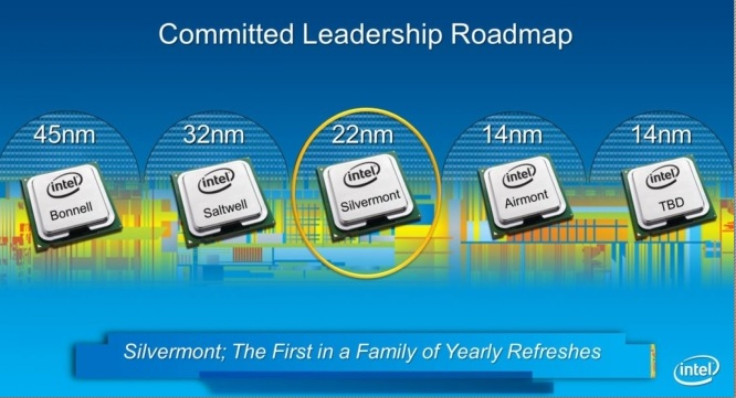Silvermont: Intel Hopes New Processor Architecture Will Replace ARM In Future Smartphones, Tablets
A mobile make-it-or-break-it for Intel

Intel announced Monday morning an overhaul to its Atom line of mobile processors that it says will be capable of three times the processing power, and one-fifth the power consumption, of its current-generation chips. The move challenges British firm ARM, whose mobile architecture is found on everything from the iPhone 5 to the Samsung Galaxy S4.
The next-generation microarchitecture from Intel, named Silvermont, allows for up to eight cores on a chip, as well as higher performance per individual core than on current Atoms, the company says. Silvermont also allows for a wider, more dynamic range of power consumption, which leads to better performance when the processor is taking on arduous tasks such as playing games, and longer battery life when asleep or performing simpler jobs such as texting.
Whereas Intel's Core line of chips are sold in desktops and most laptops, the new Atoms will power everything from smartphones and tablets to in-dash navigation systems for cars. Intel says the Silvermont is the first in a family of processors that will see an update every year.
Those heralding the “Death of the PC” might see the Silvermont as a vital product for Intel, and its coming release a make-it-or-break-it moment as desktop sales fall and tablet and smartphone sales steadily rise.
Whereas ARM licenses its architecture to be manufactured by the likes of Qualcomm (Snapdragon), Samsung (Exynos) and Apple (A-series), Intel’s new Atom architecture will be manufactured in-house.
It has been five years since Intel released its first Atom system-on-a-chip (SoC) processors to compete with ARM, and it has been unable to garner much attention in the mobile market thus far.
ARM says it held 95 percent of the mobile marketshare in 2010, and Intel proclaims it now can finally compete. The manufacturer will do so by taking a process it developed in the realm of desktop and laptop processing, and attempting it on a smaller scale for smartphones, tablets and the like.
Silvermont will be a 22nm SoC custom-built by Intel, compared to 28nm in most current-generation ARM-based chips.
The process used to create the new Intel Atom relies on new 3D transistor technology, which Intel calls the "Tri-Gate." It represents the first major shift from the standard transistors traditionally used in microprocessors; the planar transistor, which is a 2D process used to create most processors, was originally developed in 1959. Tri-Gate transistors, which have been in development at Intel only for the last decade, improve performance and energy efficiency in the company’s Core line of chips, starting with Ivy Bridge processors released in 2012.
Intel is expected to release the new processors at the end of this year.
© Copyright IBTimes 2024. All rights reserved.











